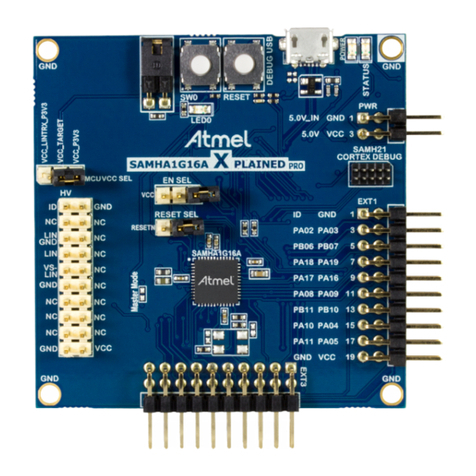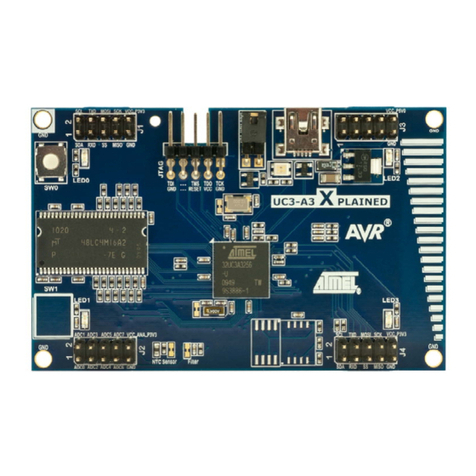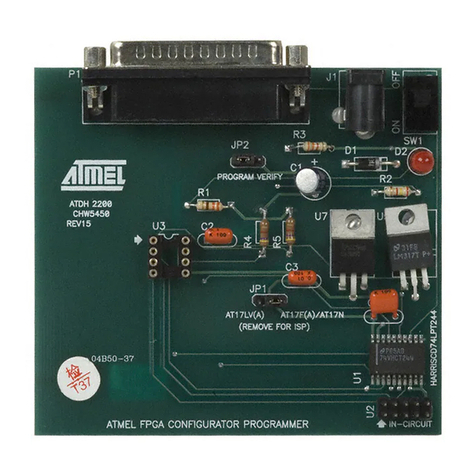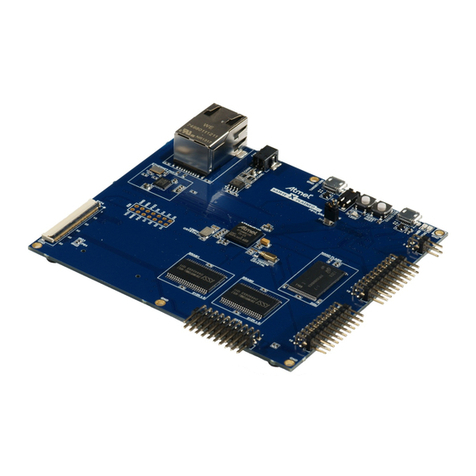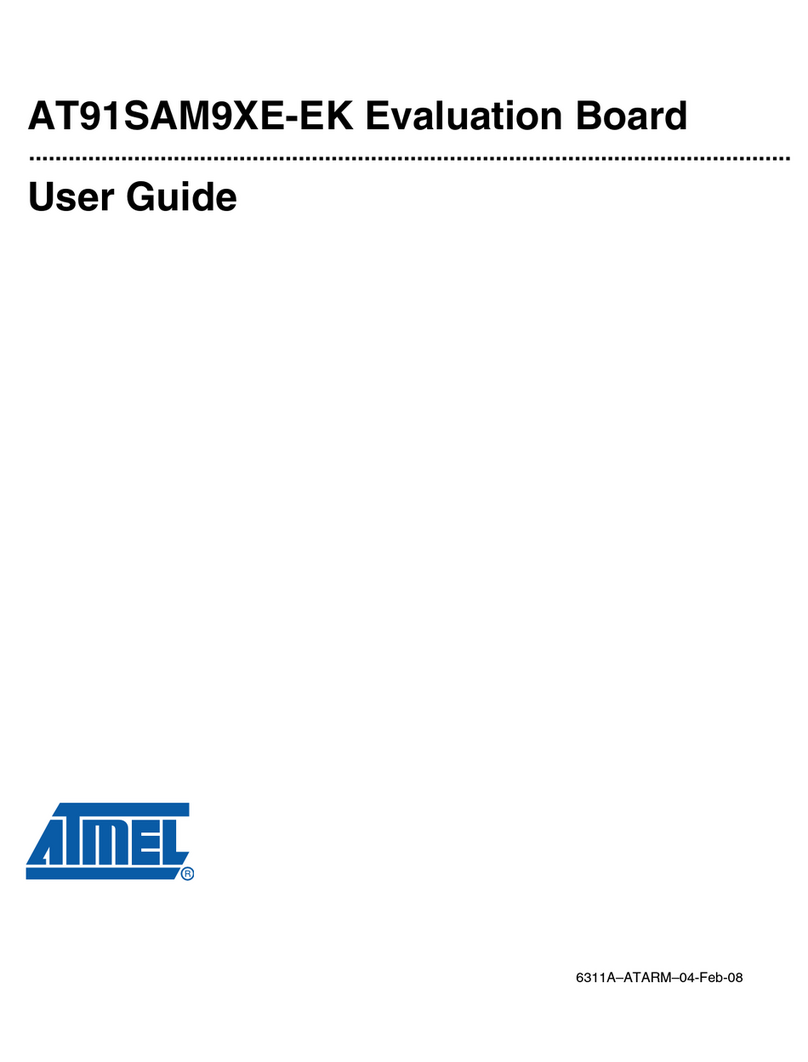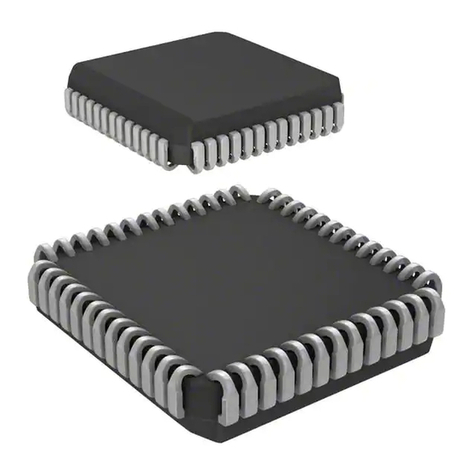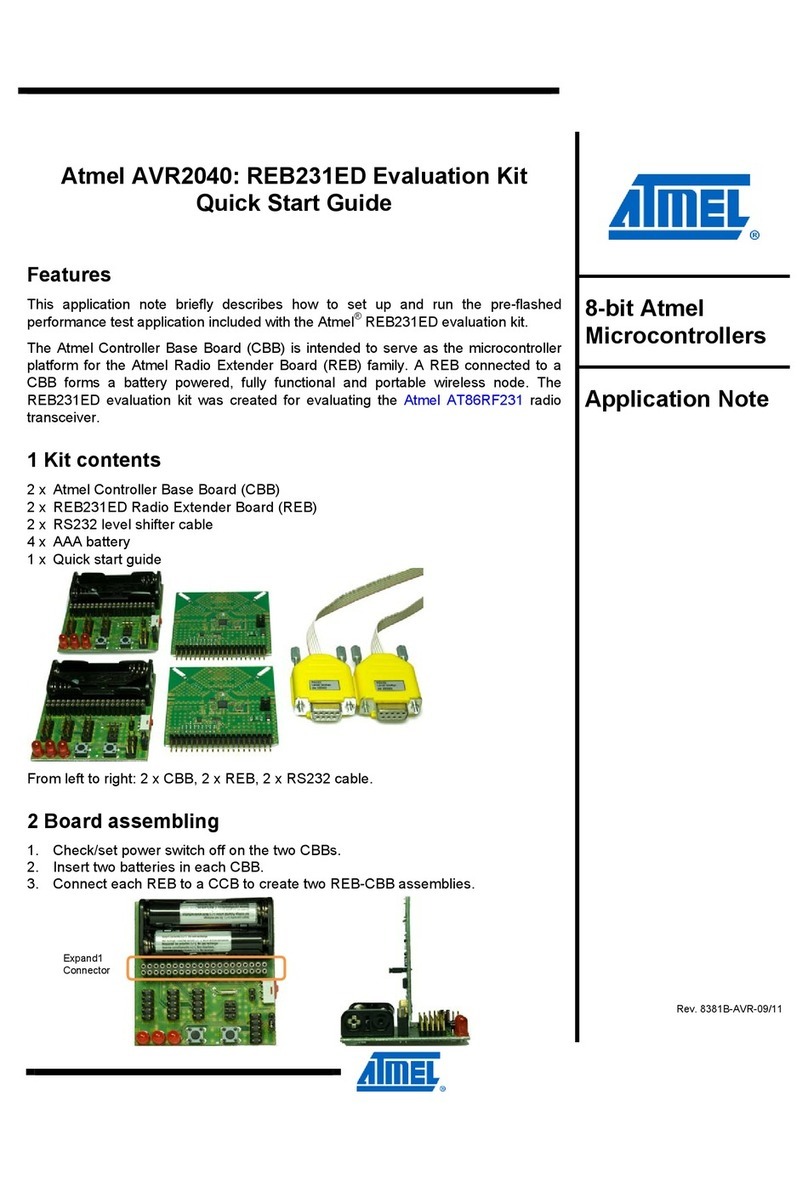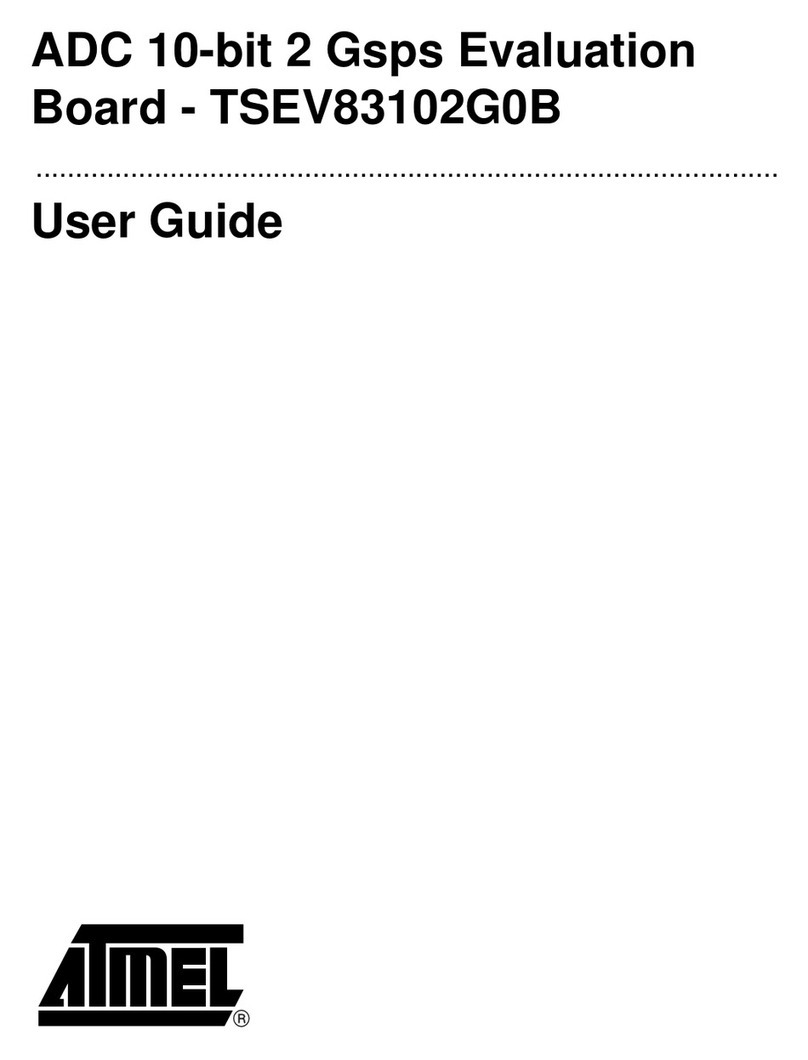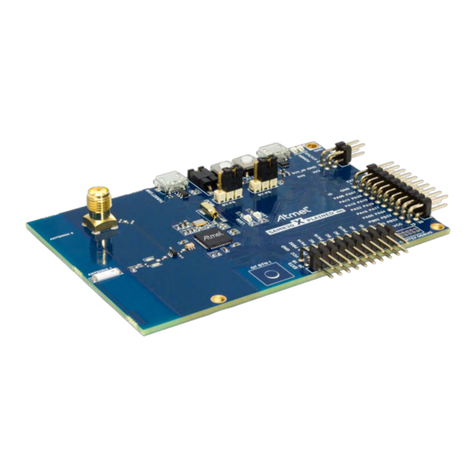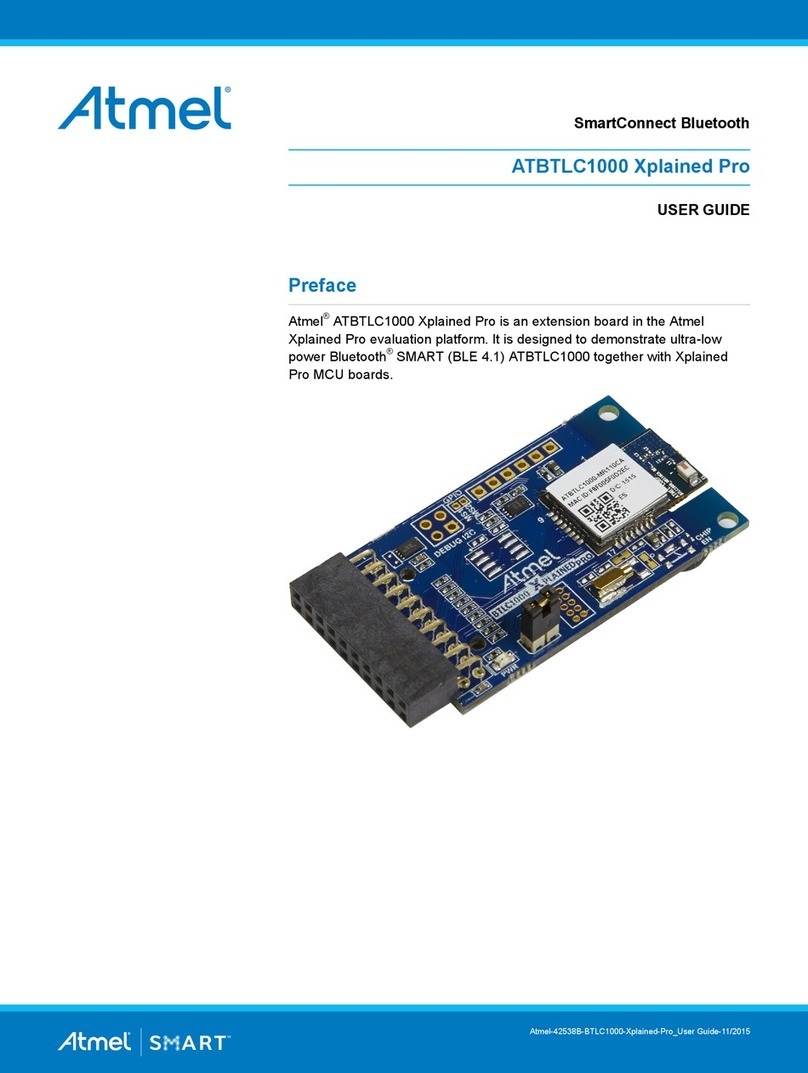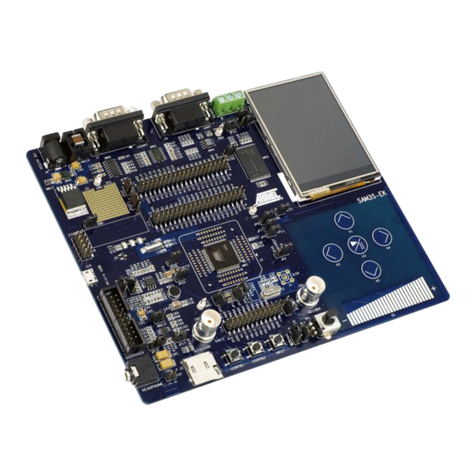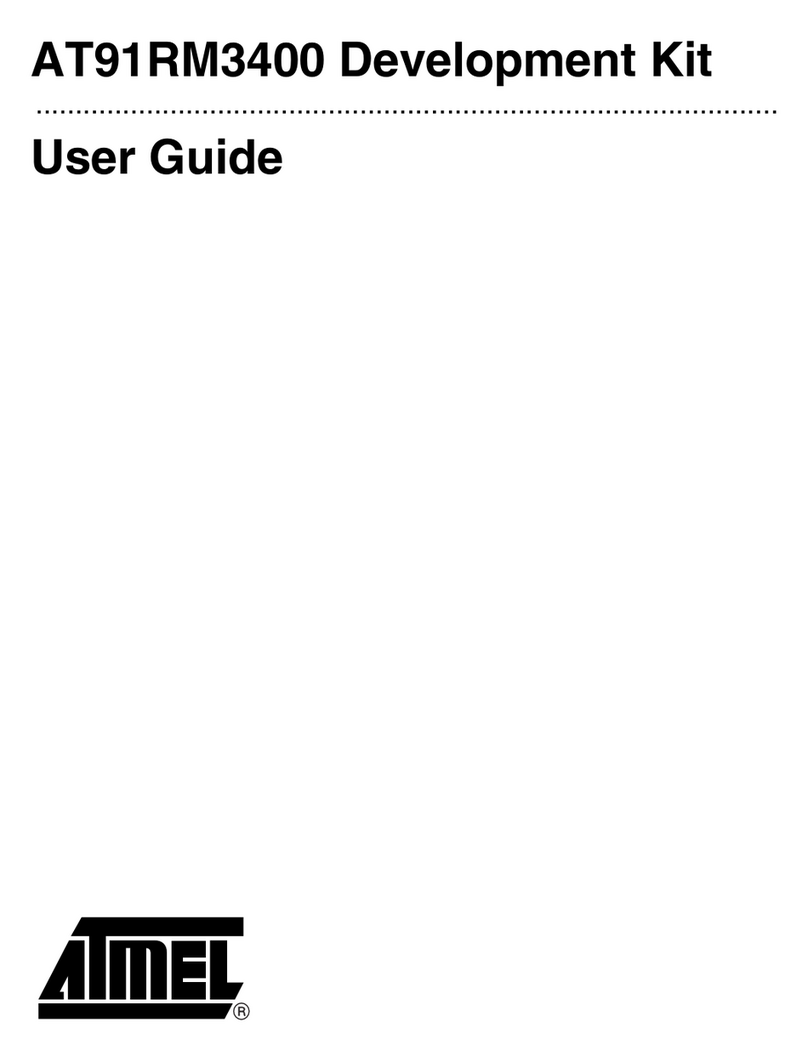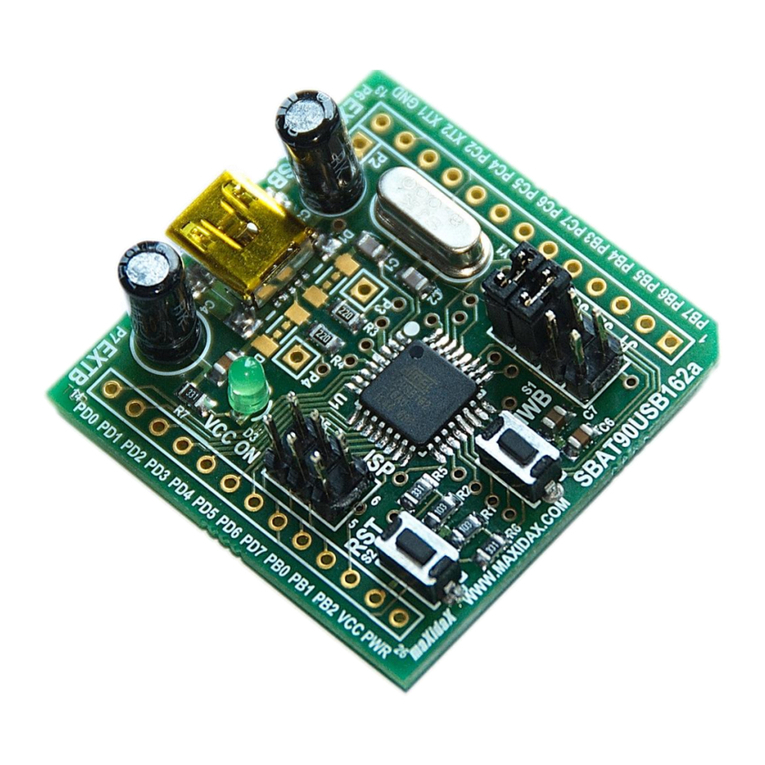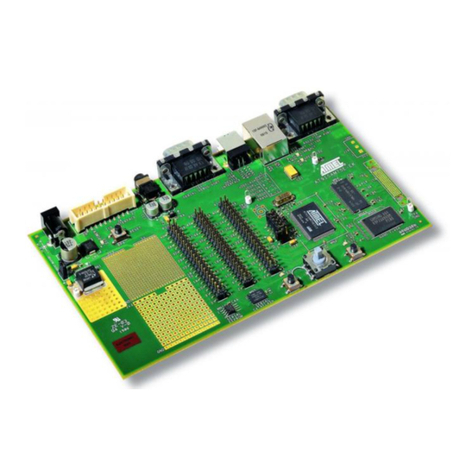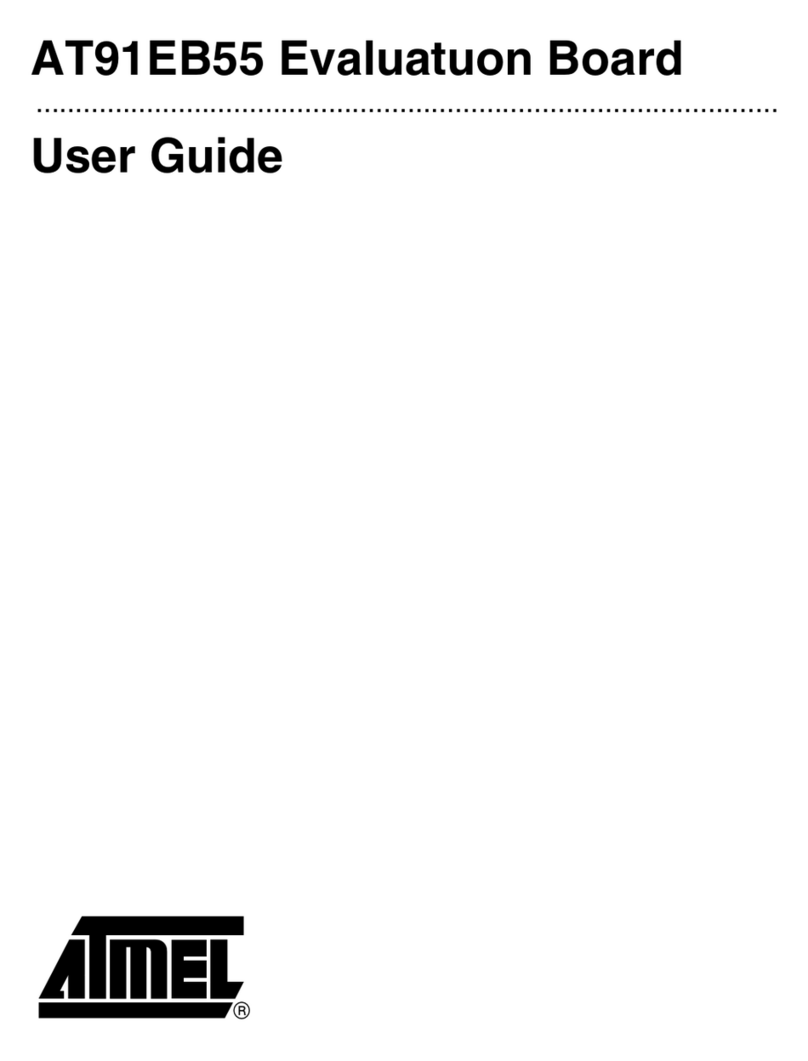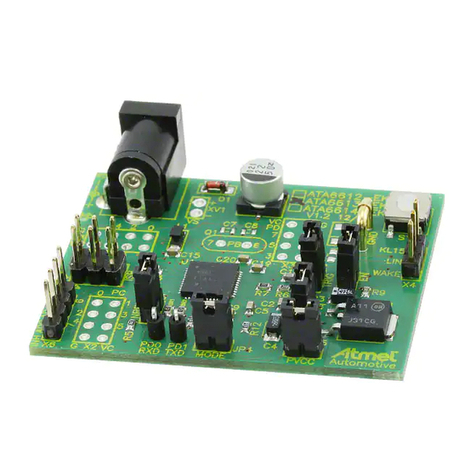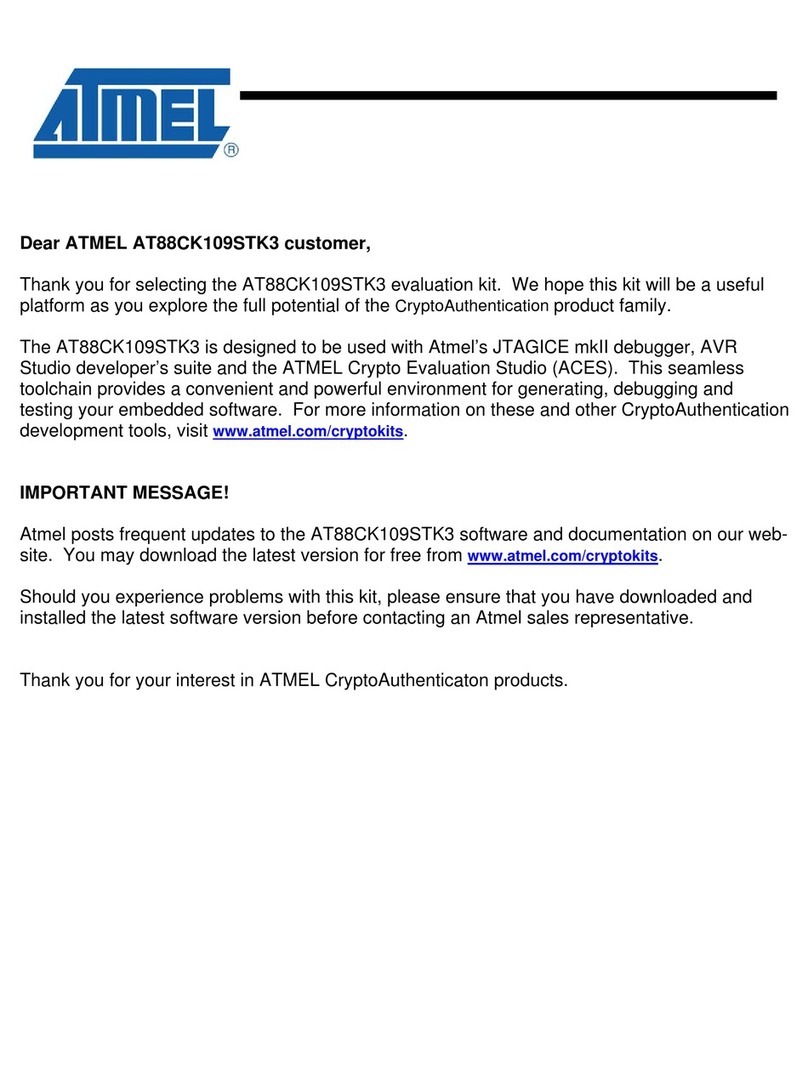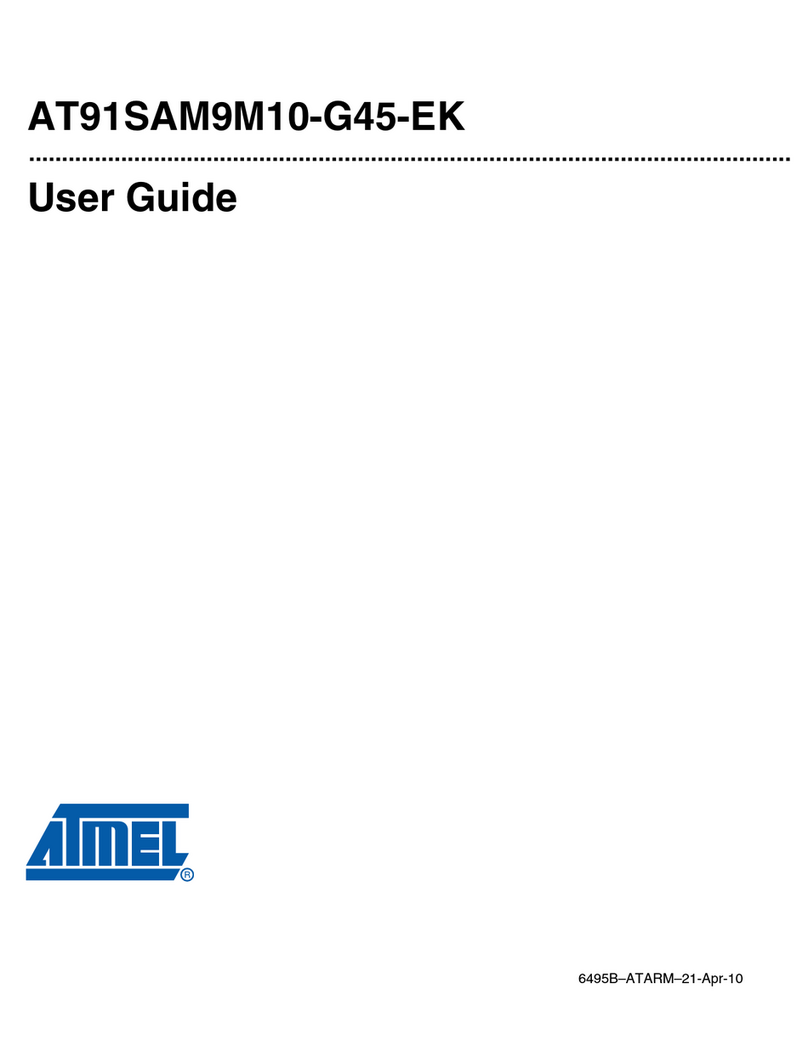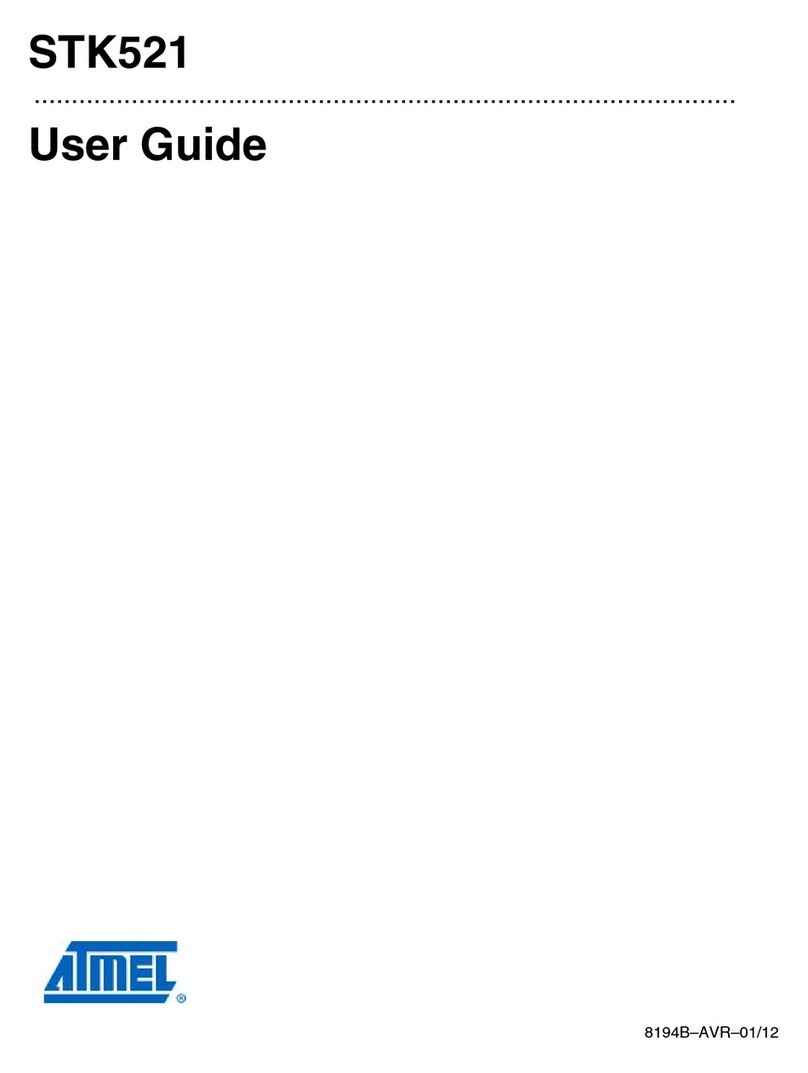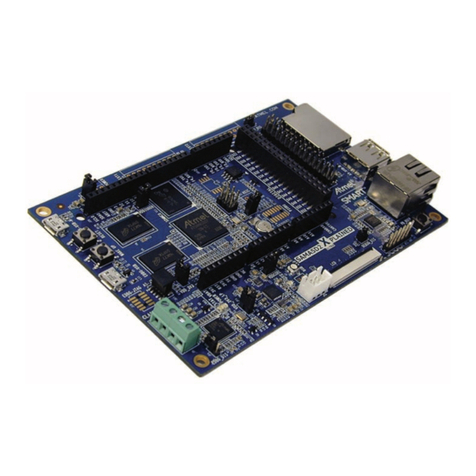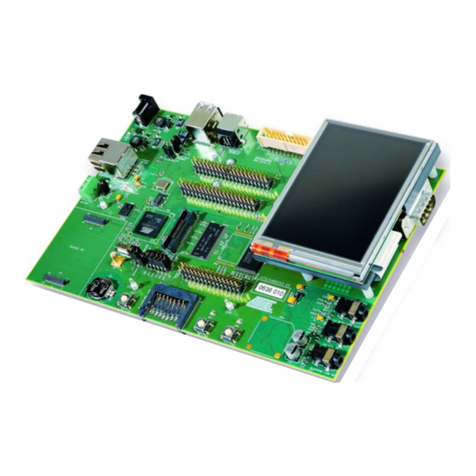
Atmel ATMEGA256RFR2 Xplained Pro [USER GUIDE]
42079A-MCU-02/13
6
3. Xplained Pro
Xplained Pro is an evaluation platform that provides the full Atmel microcontroller experience. The platform
consists of a series of Microcontroller (MCU) boards and extension boards that are integrated with Atmel
Studio, have Atmel Software Framework (ASF) drivers and demo code, support data streaming and more.
Xplained Pro MCU boards support a wide range of Xplained Pro extension boards that are connected through
a set of standardized headers and connectors. Each extension board has an identification (ID) chip to unique-
ly identify which boards are mounted on a Xplained Pro MCU board. This information is used to present rele-
vant user guides, application notes, datasheets and example code through Atmel Studio. Available Xplained
Pro MCU and extension boards can be purchased in the Atmel Web Store1.
3.1 Embedded Debugger
The ATMEGA256RFR2 Xplained Pro contains the Atmel® Embedded Debugger (EDBG) for on-board debug-
ging. The EDBG is a composite USB device of 3 interfaces; a debugger, Virtual COM Port and Data Gateway
Interface (DGI).
In conjunction with Atmel Studio, the EDBG debugger interface can program and debug the ATmega256RFR2.
On the ATMEGA256RFR2 Xplained Pro, the JTAG interface is connected between the EDBG and the
ATmega256RFR2.
The Virtual COM Port is connected to a UART port on the ATmega256RFR2 (see section “Embedded Debug-
ger implementation” on page 14 for pinout), and provides an easy way to communicate with the target appli-
cation through a simple terminal software. It offers variable baud rate, parity and stop bit settings. Note that the
settings on the target device UART must match the settings given in the terminal software.
The DGI consists of several physical data interfaces for communication with the host computer. Please, see
section “Embedded Debugger implementation” on page 14 for available interfaces and pinout. Communica-
tion over the interfaces are bidirectional. It can be used to send events and values from the ATmega256RFR2,
or as a generic printf-style data channel. Traffic over the interfaces can be timestamped on the EDBG for more
accurate tracing of events. Note that timestamping imposes an overhead that reduces maximal throughput. The
DGI uses a proprietary protocol, and is thus only compatible with Atmel Studio.
The EDBG controls two LEDs on ATMEGA256RFR2 Xplained Pro, a power LED and a status LED. Table 3.1,
“EDBG LED control” shows how the LEDs are controlled in different operation modes.
Table 3.1. EDBG LED control
Operation mode Power LED Status LED
Normal operation Power LED is lit when power is
applied to the board.
Activity indicator, LED flashes
every time something happens on
the EDBG.
Bootloader mode (idle) The power LED and the status LED blinks simultaneously.
Bootloader mode (firmware up-
grade)
The power LED and the stauts LED blinks in an alternating pattern.
For further documentation on the EDBG, see the EDBG User Guide.
3.2 Hardware identification system
All Xplained Pro compatible extension boards have an Atmel ATSHA204 crypto authentication chip mount-
ed. This chip contains information that identifies the extension with its name and some extra data. When an
Xplained Pro extension board is connected to an Xplained Pro MCU board the information is read and sent to
Atmel Studio. The Atmel Kits extension, installed with Atmel Studio, will give relevant information, code exam-
ples and links to relevant documents. Table 3.2, “Xplained Pro ID chip content” shows the data fields stored in
the ID chip with example content.
Table 3.2. Xplained Pro ID chip content
Data Field Data Type Example Content
Manufacturer ASCII string Atmel’\0’
Product Name ASCII string Segment LCD1 Xplained Pro’\0’
Product Revision ASCII string 02’\0’
Product Serial Number ASCII string 1774020200000010’\0’
1 http://store.atmel.com/
